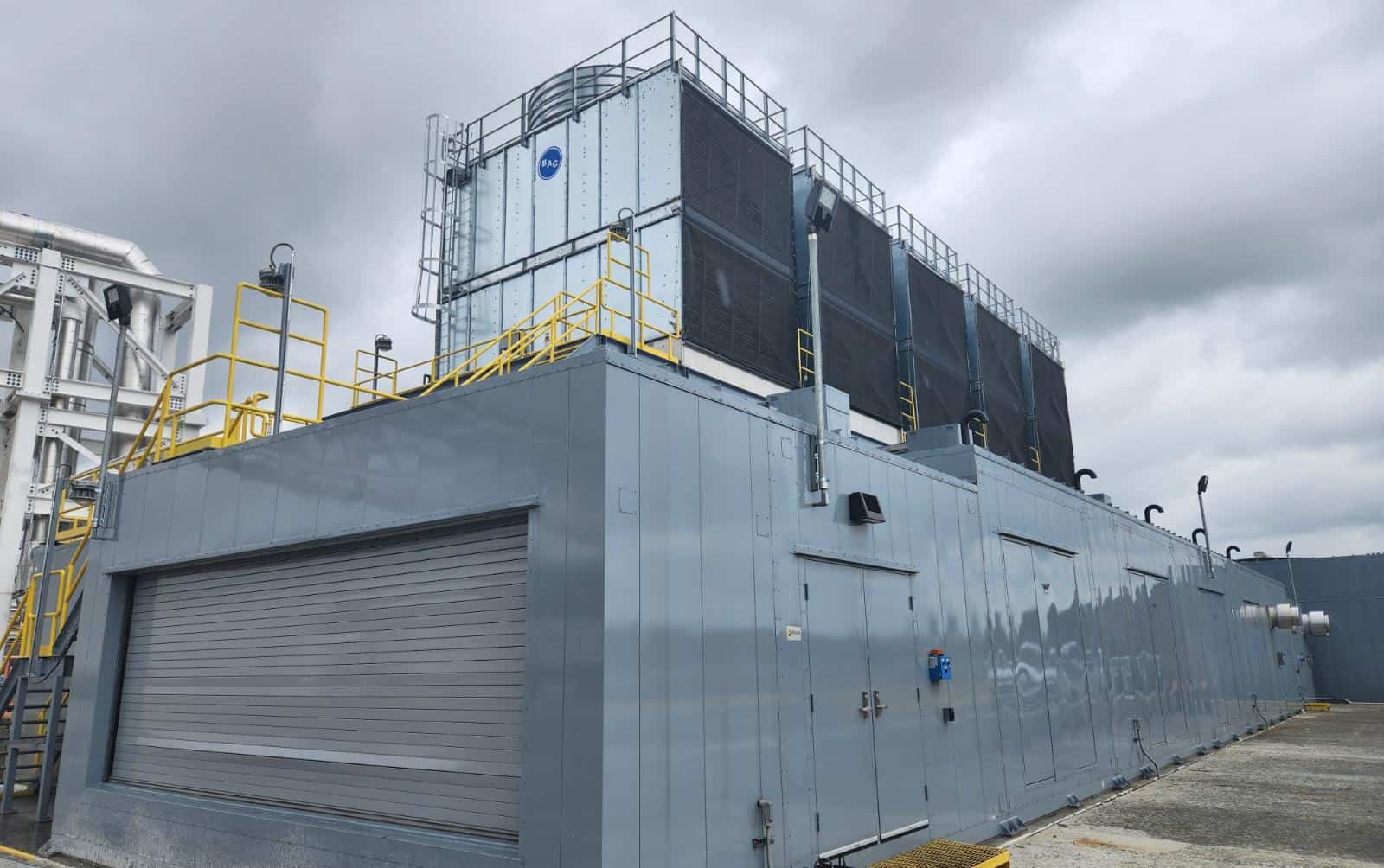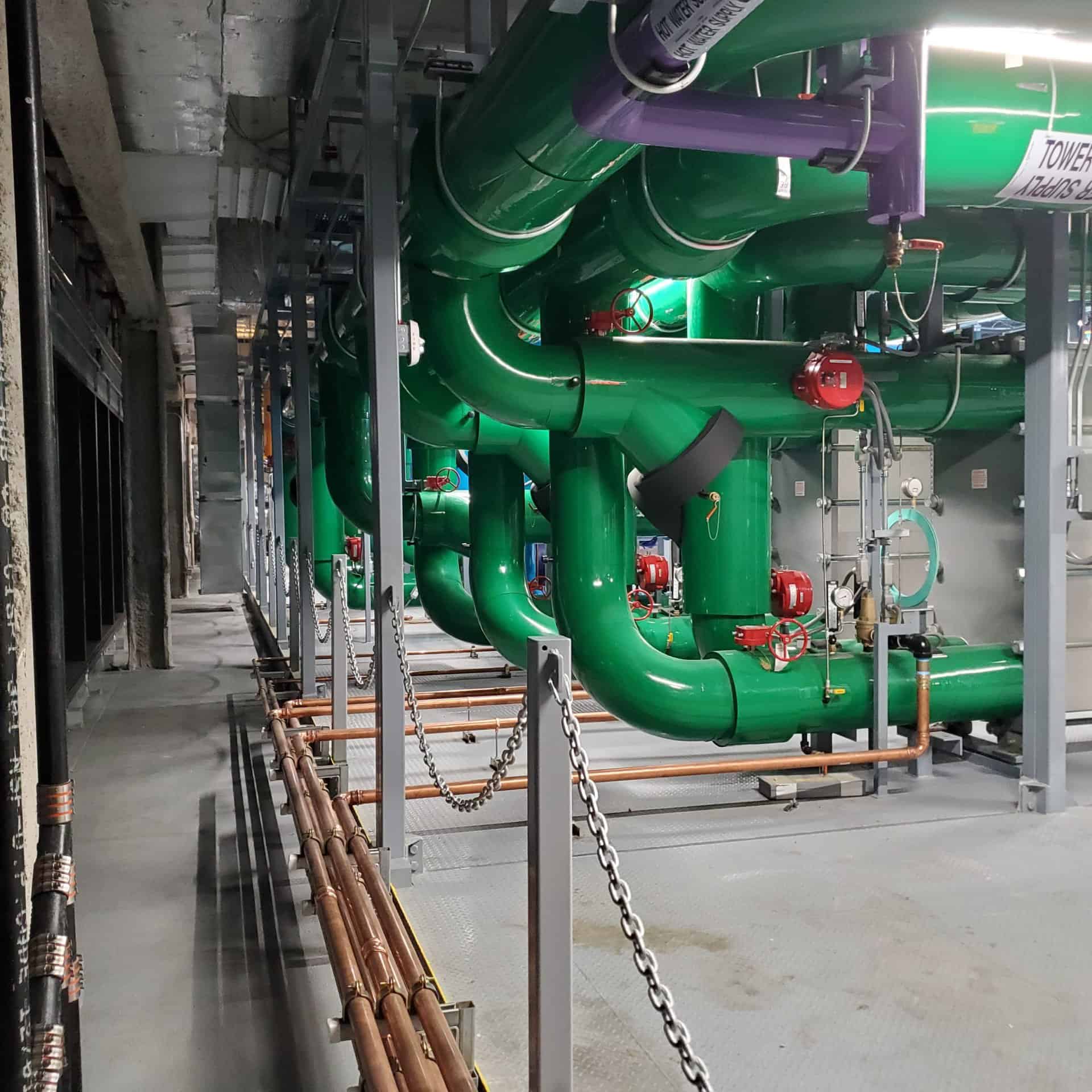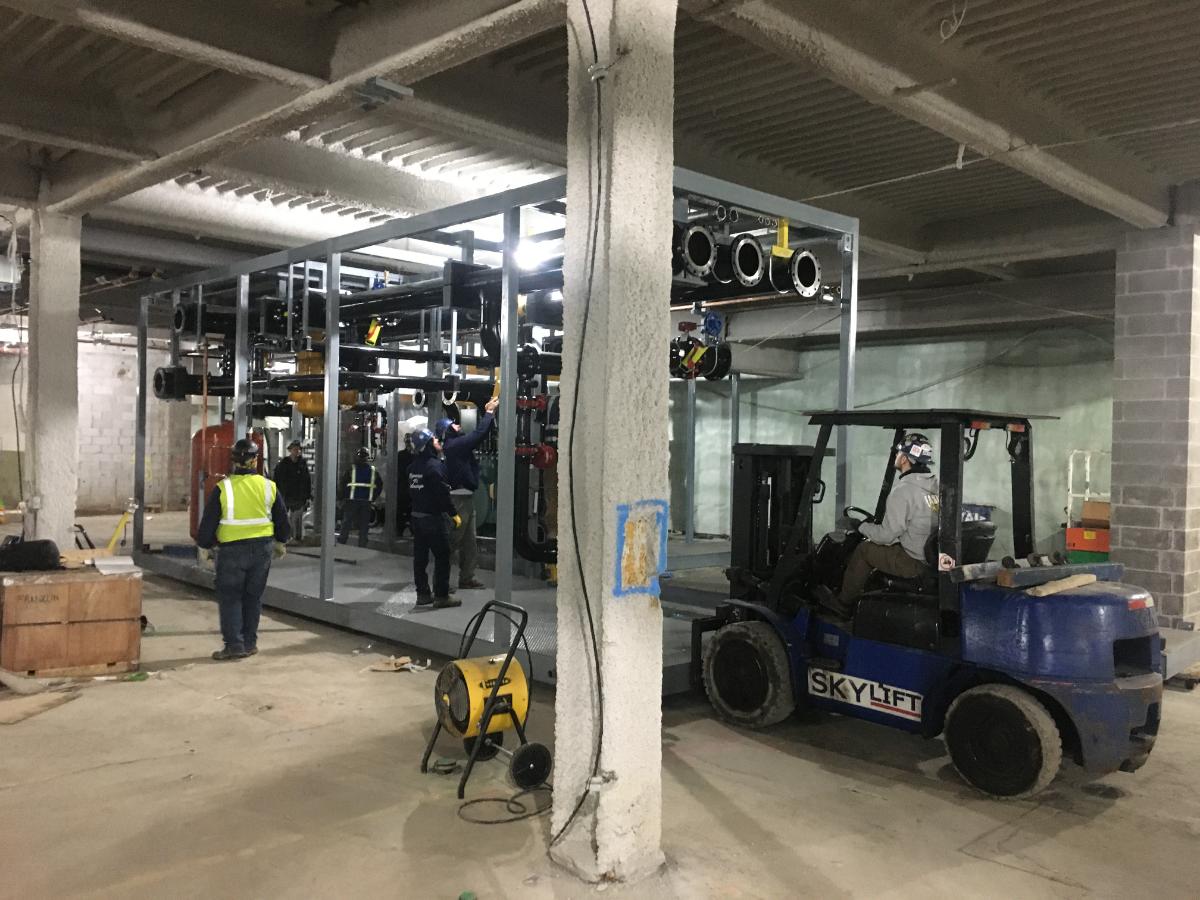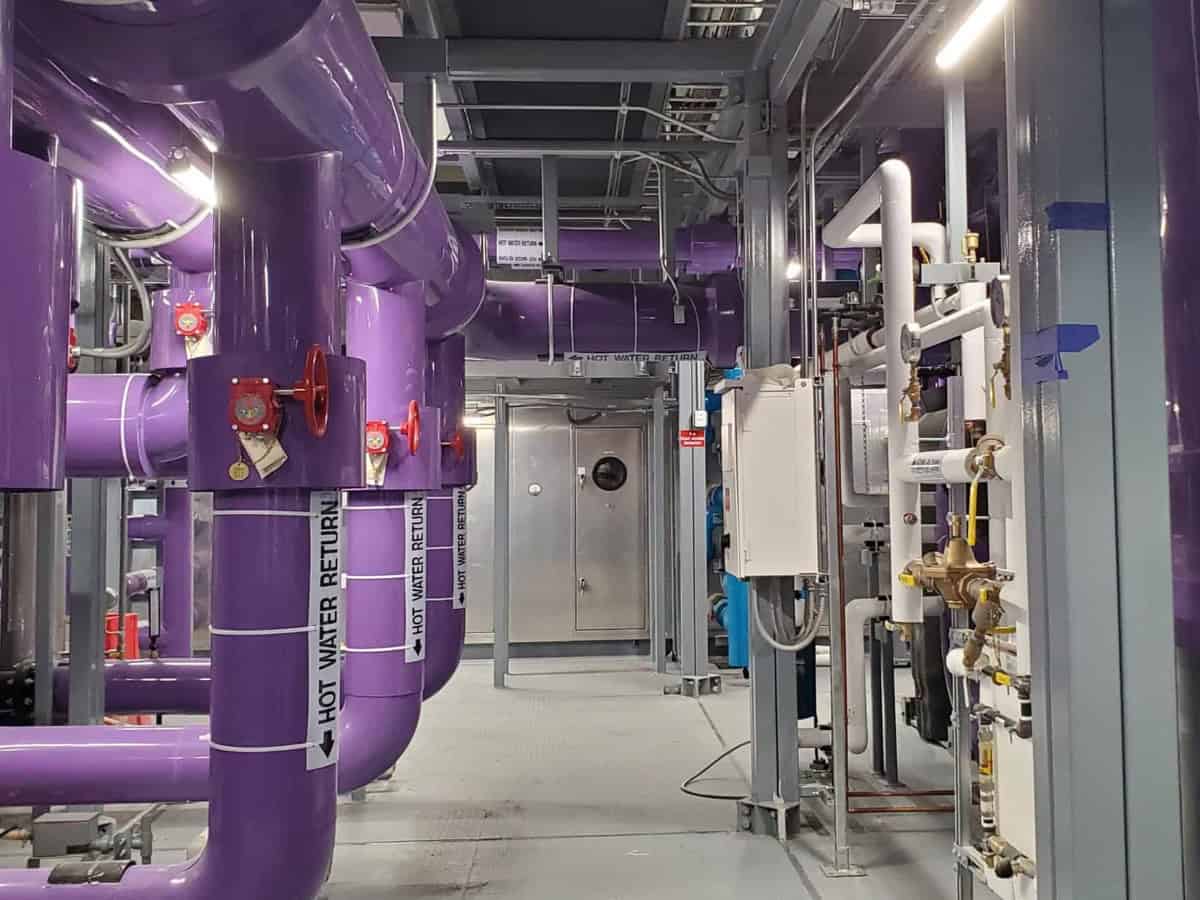When industry professionals think about the concept of a modular, prefabricated central utility plant, most envision the traditional enclosed system – designed and built in the factory with walls and a roof, just like any other building.
But as we’ve highlighted many times, another approach to modular utilities has been gaining ground in recent years: the larger skid-based system, or “super skid”. Similar to enclosed modular systems, skid-based systems are self-contained units housing essential mechanical equipment like pumps, chillers, and piping, all pre-assembled on a structural steel frame. Unlike exterior central utility plants, which might end up on a building roof or on a grade adjacent to a building, skid systems are designed to be installed within a traditionally built field structure. This key difference presents a series of unique challenges:
- 3D modeling expertise: The OSC team executing this type of project must have the experience and internal engineering resources to ensure the OSC design creates no conflicts with surrounding systems in the desired install location – including floors, ceilings, structural columns, and bracing, along with the myriad of other internal mechanical, electrical, plumbing components. This requires the ability to regularly and expertly integrate 3D modeling of the OSC systems with the balance of the project team.
- Rigging constraints: It’s not enough to make sure the OSC system fits in its’ final location; from the start, the OSC system must be designed to accommodate rigging requirements and the associated size and weight constraints at the install location. Often, this means threading each individual skid through a carefully planned route within the building structure. So the OSC team must work with the rigging team on each project to understand their crane and site issues and adjust the skid system design to accommodate this critical requirement.
- Structural and vibration control: Integrating skid-mounted equipment with each building’s structure is much more complicated than a stand-alone CUP, requiring in-house expertise in structural and vibration control, along with an understanding of the code compliance requirements of any given locale
This level of dedicated experience and expertise generally doesn’t exist with newer entries in the industry. It doesn’t mean they cannot do the job – it simply means they don’t have decades of experience improving the process. Experience that results in optimized costs, quality, and delivery. Projects like retrofitting a retail store into a medical facility, an industrial process chilled water system, or this mammoth 22-skid system in Boston highlight Epsilon’s unique position as subject matter experts and industry leaders in Off-Site Construction.
If you are considering a central utility system upgrade or retrofit, be sure to engage with the Epsilon team early in the process to determine if your project can realize the benefits OSC provides. Contact us today.






